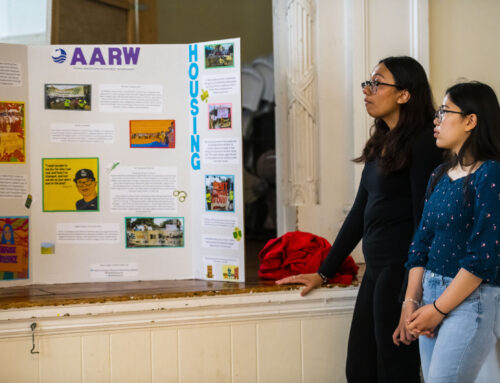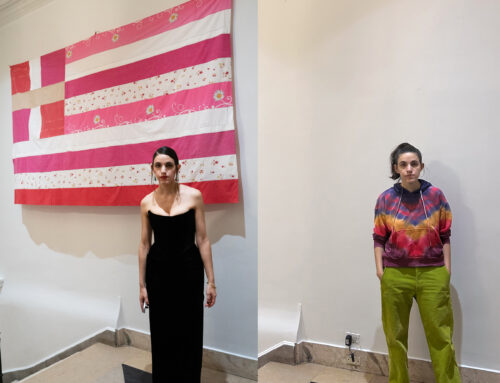Strolling around Central Park on a beautiful, leisurely day seems to have the innate ability to put everything into perspective. Breathing in the air of a quintessential New York landscape, inhaling the rich culture of the city, and taking in the juxtaposition of this beautiful plot of nature smack dab in the middle of the concrete jungle can, at times, be just the right medicine. With awe-inspiring and educational bronze giants scattered amongst the trees and framing paved walkways, this cultural nexus has been quietly nurturing a deep and deafening gender disparity. Filled with two dozen statues commemorating historical male figures, most of whom are white, Central Park has only had three depictions of women, all fictitious characters. Shakespeare’s Juliet stands alongside her Romeo, Alice in Wonderland is surrounded by her magical friends, and the Angel of the Waters welcomes you above Bethesda Fountain, all without a trace of a real and respected woman, until now. Unveiled on August 26th in Central Park’s Literary Walk, The Women’s Rights Pioneers Monument is the very first sculpture representing nonfictional historic women in the park’s 167-year history.
In honor of the centennial anniversary of women’s right to vote, the 14-foot-tall bronze statue commemorates three suffragists: Sojourner Truth, Susan B. Anthony, and Elizabeth Cady Stanton, celebrating their significant contributions towards the Women’s Rights Movement. The monument has come to fruition through the hands of acclaimed sculptor, Meredith Bergmann, who with the help of volunteer nonprofit group Monumental Women, initiated the project. The organization assembled back in 2014, raising $1.5 million in private funding towards the commission and endowment of the momentous sculpture, while also receiving funds from Manhattan’s borough president Gale Brewer and Councilwoman Helen Rosenthal.
While originally pitched and imagined with just Anthony and Stanton, the monument would have seen the two of them holding a scroll including quotes and signatures from more than 20 pivotal suffragists. The proposed design received heavy criticism for omitting the indispensable contributions of Black women towards the suffrage movement. At such a critical time and turning point in history, where statues of racist figures are being vandalized and uprooted, it would have been an absolute disservice to history and feminism to celebrate the inclusion of an entire gender by means of excluding women of color. In response to the backlash, Monumental Women corrected the layout, adding Sojourner Truth to the game-changing monument. After clay molds and design outlines were finally approved by the commission, Bergmann had less than a year to pull the reimagined sculpture together.
After campaigning for about 100 years, the vital objective of the Women’s Suffrage Movement came to fruition with the ratification of the 19th Amendment in 1920. The long and winding road that eventually led these bold and revolutionary women to success has been considered the largest of nonviolent revolutions in American history, with the end result granting women the right to vote, thus dramatically shifting women’s social, political, and economic standing.
Sojourner Truth’s tale is one of undying resilience and sheer bravery. An abolitionist and women’s rights activist, Truth was born into slavery until escaping in 1826 with her infant daughter. After going to court to rescue and reclaim her son two years after gaining freedom, she became the first Black woman to win a case of this kind against a white man. Women’s rights activist and social reformer, Susan B. Anthony played a critical and visible role in the Women’s Suffrage Movement, traveling around the country and making speeches demanding the right to vote. As she was raised a Quaker, social equality was considered a crucial value from which her worldview was formed. Together with Elizabeth Cady Stanton, the two co-founded the American Equal Rights Association. A leader in the Women’s Rights Movement and abolitionist, Elizabeth Cady Stanton fronted the cause from the mid to late 1800s. She instigated the Seneca Falls Convention in 1848, the first assembly to primarily discuss women’s issues while also being responsible for penning the Declaration of Sentiments. The document was passed at the Convention as the first of it’s kind to state in print that women deserve the right to vote.
Now materialistically immortalized in Central Park, the feminist trio is seen collaboratively working together around a table, conveying a sense of sisterhood, activism, and cooperation, as imagined by Bergmann. The statue is scattered with subtle and varied references to their lives and their efforts toward gender equality with every minute creative detail. Sojourner Truth looks to be mid-sentence, Anthony clasps a brochure that reads “Votes for Women,” while Stanton appears to be taking notes. As far as hidden references go, Bergmann told the New York Times that when she was replicating the shawl Truth was known to wear, she depicted the garment with tassels blowing in the wind and rendered a striped brocade jacket, emblazoning laurel wreaths to represent honor and victory. The sculptor went on to explain that the cameo which hangs from Susan B. Anthony’s neck depicts Minerva, the Roman goddess of wisdom, and that the sunflower pattern carved into Elizabeth Cady Stanton’s ensemble alludes to her pseudonym Sunflower when she wrote editorials for The Lily newspaper based in Seneca Falls, NY.
Out of 150 historical statues in all of New York City, a mere five are women. While Central Park’s Women’s Rights Pioneers Monument is a step in the right direction, the glaring chasm that is the wide and prevalent gender and racial disparity in public art need to be amended. President of Monumental Women Pam Elam told the New York Times, “For the people who might think ‘OK, you’ve broken the bronze ceiling, good for you, now your work is done’ — no, absolutely not, we are here to stay.” The nonprofit has claimed its plans to call municipalities across the nation and encourage them to honor more women and POC in their public spaces. Monumental Women will also be implementing a digital educational campaign, hoping to provide literature on women’s history to NYC’s public school libraries. “The fact that nobody, for a long time, even noticed that women were missing in Central Park — what does that say about the invisibility of women?” Elam asked the New York Times. “There is a responsibility to not only create a beautiful work of art but to have that art reflect the reality of the lives of all the people who see it.” Celebrating traditionally marginalized or disenfranchised historical revolutionaries in public art symbolizes where we’ve been and how far we’ve come. The Women’s Rights Pioneers Monument provides a lesson in fighting for freedom and equality, paying homage to the three valiant New York women responsible for implementing such radical social change for a brighter future.





Beautifully written.